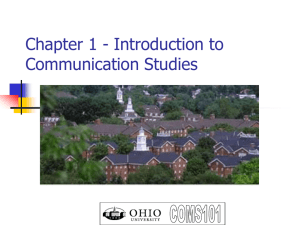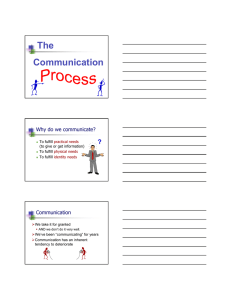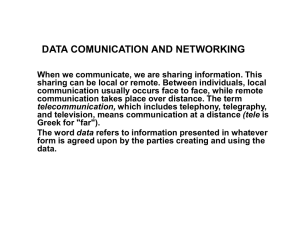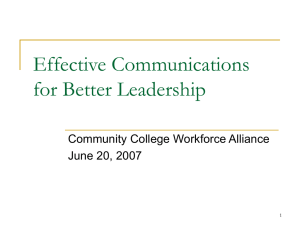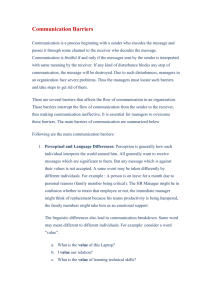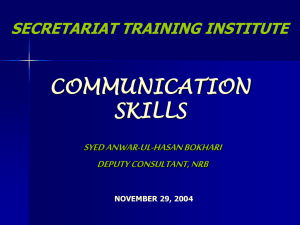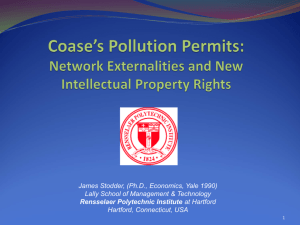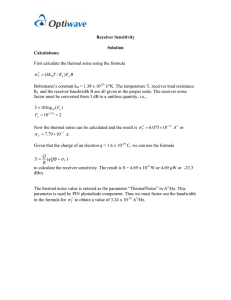Communication Process
advertisement
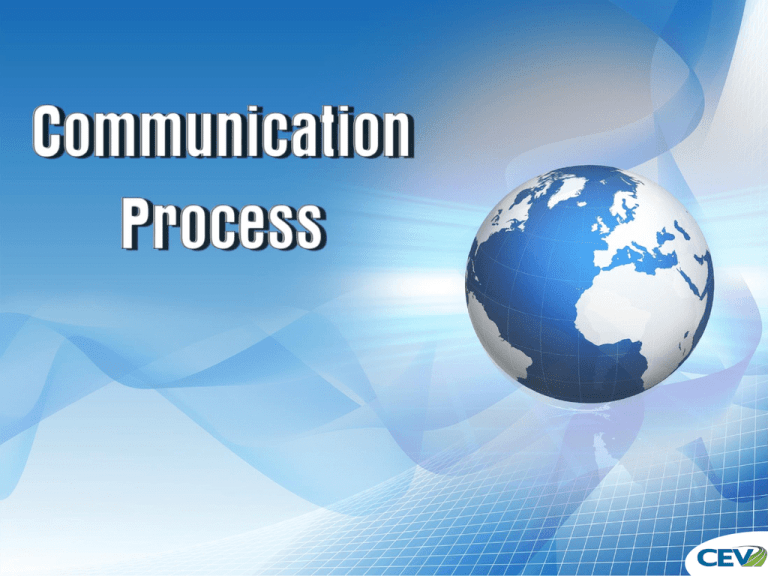
Communication Process Transactional Communication Model 2 The Communication Process • Includes the following parts: – information source – message – channel or medium – receiver – feedback – noise 3 Information Source • Is also known as the communicator or transmitter of the information • Is the source of the information or material that is being communicated • Can be a primary or secondary source Primary source is an original fundamental and authoritative document pertaining to an event or subject of inquiry; a firsthand or eyewitness account of an event Secondary source is any document that describes an event, person, place or thing Message • Is the meaning or subject of the information being communicated – dependent upon the context in which it is used • Is a thought or idea expressed verbally or nonverbally • Refers to the information and the method in which it is being sent 5 Channel or Medium • Is how the message is being sent • Can be either face to face interaction or through telephone, e-mail, etc. • Needs to be predetermined in order for the sender to send his/her message most effectively 6 Receiver • Is the person or group for which the information is meant • Is also known as the audience • Does not necessarily have to be present and listening to the information – can be a reader of an article or advertisement 7 Examples • Audience at a banquet or convention • Person reading a newspaper or magazine • Someone reading a billboard while driving Fun Fact: Heinz Ketchup was invented the same year Alexander Graham Bell made his first phone call. 8 Feedback • Is an important element for communication • Is a reply or reaction to the message made by the receiver • Can either be verbally or non-verbally transmitted 9 Examples • Facial expressions or body movement during a conversation • A person or a group of people conversing back to the sender of the message 10 Noise • Can occur at any part of the process • Is a distraction that interrupts the message from being understood • Is typically characterized by background noise in a conversation 11 Example • Two people are talking about where they are going to eat for lunch, but they can’t hear each other due to the cars driving past them. Fun Fact: Noise is not just limited to sounds. It can also be time and the distance between the two (or more) communicating. 12 Professional Communication • Is the visual, written or oral communication in a workplace context • Is the process of sharing information, ideas or attitudes between a sender and a receiver • Can be either internal or external business communication Professional is a courteous, conscientious businesslike 13 manner in the workplace Professional Communication Channels • Include: – face-to-face interaction – telephone conversations – presentations – reports – letters and memos – electronic media, such as: email video broadcast 14

